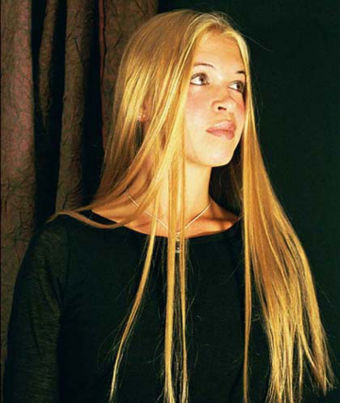Beauty: Difference between revisions
imported>Thomas Wright Sulcer (starterarticle) |
imported>Thomas Wright Sulcer (picture) |
||
| Line 1: | Line 1: | ||
{{subpages}} | {{subpages}} | ||
[[Image:Beauty.jpg|thumb|left|340px|alt=Picture of a woman with blonde hair.|While beauty is in the ''eye of the beholder'', there are norms and standards of which types of faces are considered beautiful.]] | |||
'''Beauty''' is a way to describe an essentially [[visual]] [[experience]] in which an [[object]] seen is believed to be [[aesthetics|aesthetically]] [[appeal|appealing]] and [[physical attraction|attractive]] and [[pleasure|pleasurable]] to look at. It creates [[desire]]. It can describe a [[person]], [[thing]], [[place]], [[animal]], [[concept]], or something else. It is a [[subjective]] experience, so that the [[inference]] of beauty happens in the [[mind]] of the person [[perception|perceiving]] the object; a viewer may see ''beauty'' as an [[intrinsic]] characteristic of the object viewed. Beauty often feels like a characteristic belonging to an object but it essentially involves perception by the person seeing, as denoted in the often repeated phrase ''Beauty is in the eye of the beholder''. As a result, two people, viewing one object, may come to different [[conclusion]]s about whether the object is beautiful. Still, there is [[evidence]] that there is substantial [[agreement]] about what constitutes a beautiful [[human face]], which is marked by [[symmetry]] and [[proportionality]] and [[balance]] among different features, and lacking [[defect]]s. In some sense, beauty may describe an [[ideal]] or supposed ideal. | '''Beauty''' is a way to describe an essentially [[visual]] [[experience]] in which an [[object]] seen is believed to be [[aesthetics|aesthetically]] [[appeal|appealing]] and [[physical attraction|attractive]] and [[pleasure|pleasurable]] to look at. It creates [[desire]]. It can describe a [[person]], [[thing]], [[place]], [[animal]], [[concept]], or something else. It is a [[subjective]] experience, so that the [[inference]] of beauty happens in the [[mind]] of the person [[perception|perceiving]] the object; a viewer may see ''beauty'' as an [[intrinsic]] characteristic of the object viewed. Beauty often feels like a characteristic belonging to an object but it essentially involves perception by the person seeing, as denoted in the often repeated phrase ''Beauty is in the eye of the beholder''. As a result, two people, viewing one object, may come to different [[conclusion]]s about whether the object is beautiful. Still, there is [[evidence]] that there is substantial [[agreement]] about what constitutes a beautiful [[human face]], which is marked by [[symmetry]] and [[proportionality]] and [[balance]] among different features, and lacking [[defect]]s. In some sense, beauty may describe an [[ideal]] or supposed ideal. | ||
Revision as of 14:33, 17 April 2010
Beauty is a way to describe an essentially visual experience in which an object seen is believed to be aesthetically appealing and attractive and pleasurable to look at. It creates desire. It can describe a person, thing, place, animal, concept, or something else. It is a subjective experience, so that the inference of beauty happens in the mind of the person perceiving the object; a viewer may see beauty as an intrinsic characteristic of the object viewed. Beauty often feels like a characteristic belonging to an object but it essentially involves perception by the person seeing, as denoted in the often repeated phrase Beauty is in the eye of the beholder. As a result, two people, viewing one object, may come to different conclusions about whether the object is beautiful. Still, there is evidence that there is substantial agreement about what constitutes a beautiful human face, which is marked by symmetry and proportionality and balance among different features, and lacking defects. In some sense, beauty may describe an ideal or supposed ideal.
